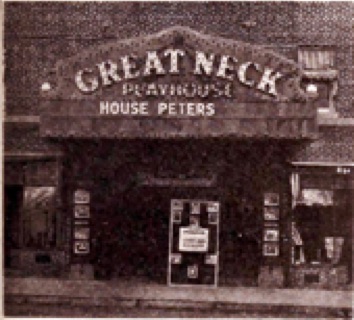Great Neck’s Playhouse Theater has played a central role in the community since its construction in 1922 — but now it is just a big hole in the ground.
The Great Neck Historical Society will take an in-depth look at the theater’s storied history and the future of the site during a Zoom program open to the community on Thursday, December 16, beginning at 7:30 p.m.
Former Great Neck resident Ed Naidamast took a liking to the theater and made it his mission to research why the Middle Neck Road theater was constructed at that site, who built it, live shows that were performed there, celebrities who starred in presentations or came to see the shows as part of the audience, the conversion of the theater to a movie venue, and, more recently, the demise of the Playhouse.
He will discuss these points, show pictures of the theater and its performance through the years, and answer audience questions as part of the presentation.
In addition, Historical Society members Carol Frank and Bruce Funk will discuss efforts the organization had made to preserve the building —or structurally significant parts of it — as notably important parts of Great Neck’s history. Great Neck Estates Mayor William Warner has also been invited to speak on his village’s role in the upcoming development of the site.
There is no charge for the program, but registration is required at https://bit.ly/GNHS-Winter-Program-Registration.
Naidamast, who left Great Neck in the 1970s to begin a career in the Navy and the U.S. Defense Intelligence Agency in Washington, D.C., is a 1971 graduate of Great Neck South High School and a 1975 graduate of Utica College.
While living in Great Neck, he spent countless hours in the Great Neck Library combing through old newspaper articles to research the Playhouse Theater’s history. What he found was a comprehensive series of stories highlighting numerous theatrical performances as shows made their way to Broadway, complete with cast listings that often included young actors who would go on to successful acting careers.
“It is hard to envision a Great Neck that was largely isolated on a peninsula surrounded by a rural landscape, a community that was largely forested in areas that had yet to be developed, including Russel Gardens, Thomaston and University Gardens,” Naidamast said. “Great Neck was a quiet community comprised of great estates, such as those of Walter Chrysler and George M. Cohan, as well as more modest homes. In that setting the decision was made to construct a live theater to feature big-name shows on the way to Broadway.
Major stars found their way to Great Neck, with the theater attracting large crowds. On any given night, members of the audience might include Groucho Marx, who lived in Great Neck, W.C. Fields, who lived in Douglaston, Eddie Cantor, who lived in Manhasset, and John Phillip Sousa, who lived in Port Washington, among many others.”
But, what went wrong? Why did the shows stop? And, later, why did the movies stop? Mr. Naidamast’s research reveals fascinating answers. And, what does the future hold for the fabled site? Historical Society members will discuss the future—as well as their efforts to preserve the past — with Zoom participants.



